It’s Peach Season in North Carolina
Bite into these mouthwatering photos and fresh facts about North Carolina's homegrown peaches.

Peach season has arrived and it’s as sweet and juicy as ever. From the mountains to the beach and all the lakes and farmland in between, peaches represent that quintessential summer treat. What many North Carolinians may not know is that our very own state grows its fair share of these delectable stone fruits.
Between 2017 and 2022, the number of peach farms and total peach acreage increased in North Carolina. As of the 2022 Census of Agriculture, North Carolina had 356 peach farms on a total of 1,273 acres.
So buy yourself a bushel at a roadside stand, unfold your lawn chair, and dig into some fun facts about North Carolina’s perfect peaches.
Not all peaches are created equal. Plant breeders at several land-grant universities across the country spend decades developing unique varieties tailored to regional climates, pest pressures, and diseases while ensuring excellent texture and flavor. Like other fruit trees, peaches need to spend a certain number of hours at cold temperatures in the winter to bear fruit and avoid spring frost damage. North Carolina farmers are able to grow peaches today because NC State’s now-retired peach breeder developed varieties specifically suited to North Carolina’s climate.
“Anything we want to grow here in North Carolina has high chill requirements — around 1,000 or more chilling hours,” says Jeremy Martin, superintendent of the Sandhills Research Station in Montgomery County. “But folks south of us want 850 or less because they don’t have to worry as much about spring freezes. A lot of Clemson’s releases therefore have lower chilling hours with earlier bloom times. Luckily, we still have NC State varieties that are reliable for our climate, but they’re unlikely to be improved upon over time.”
Chilling hours: the number of total hours that a fruit tree must spend in temperatures below 40°F during the dormant (winter) season.
Since NC State University’s peach breeder retired several years ago, the university has partnered with Clemson University and the University of Arkansas to continue breeding peaches.
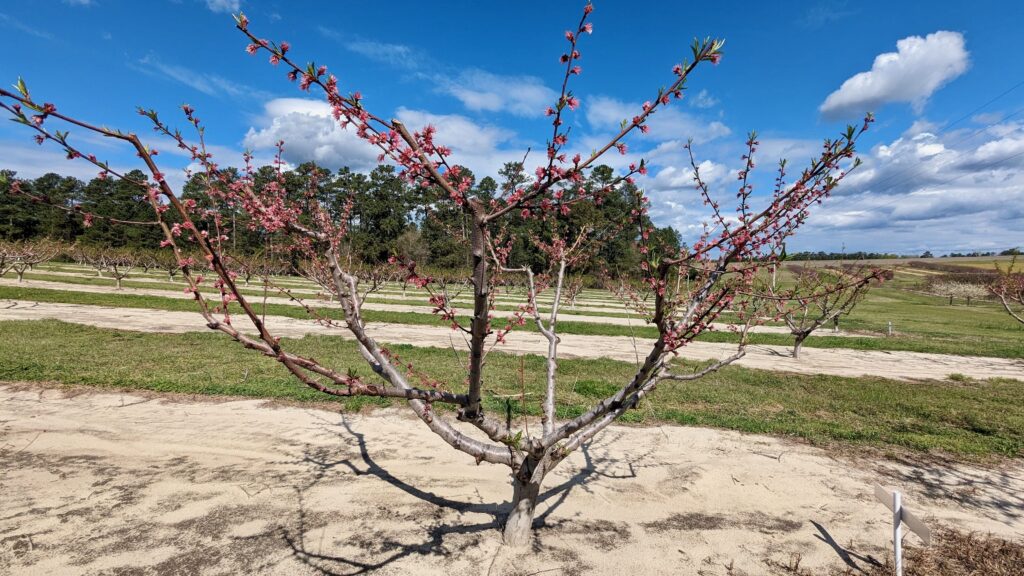
“The peach industry in North Carolina has changed a lot,” Martin says. “The pack-and-ship peach industry is almost completely gone with the closest operation in Macbee, South Carolina. Most of the peach growers in North Carolina are growing more for the fresh market in their immediate areas on less than 100 acres. Social media has helped a lot with getting the word out about their peaches.”
The Sandhills Research Station was originally founded as a working peach farm. It has since been used by breeders and researchers across academic departments for its unique soil type. The area’s namesake sandy soils drain quickly, allowing faculty to put peach trees and many other crops through severe stress tests to develop better solutions to a changing climate.
“Maybe I’m biased, but peaches from the Sandhills just taste better,” Martin says. “Because of the sandy soils that drain water, sugar builds up in the fruit. If we get hot and dry conditions when the peaches get ripe, they’ll be really sweet and juicy.”

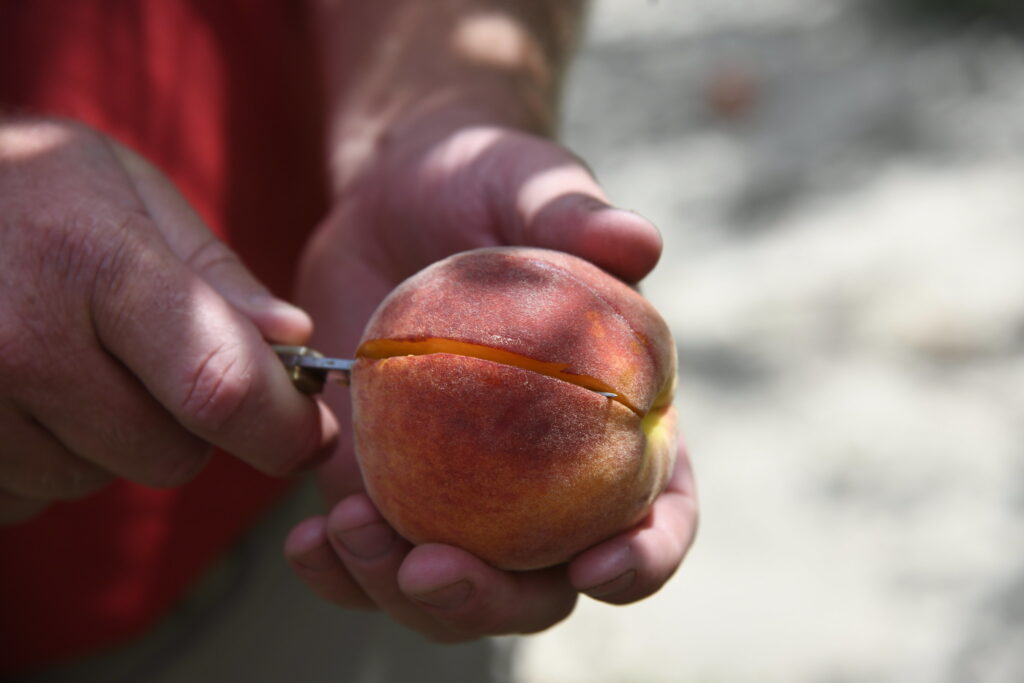
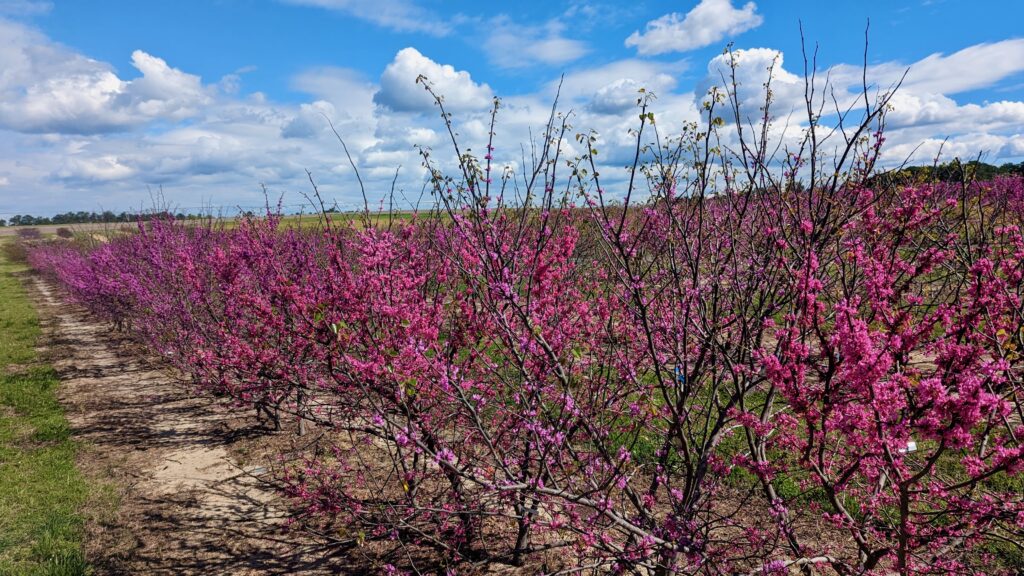

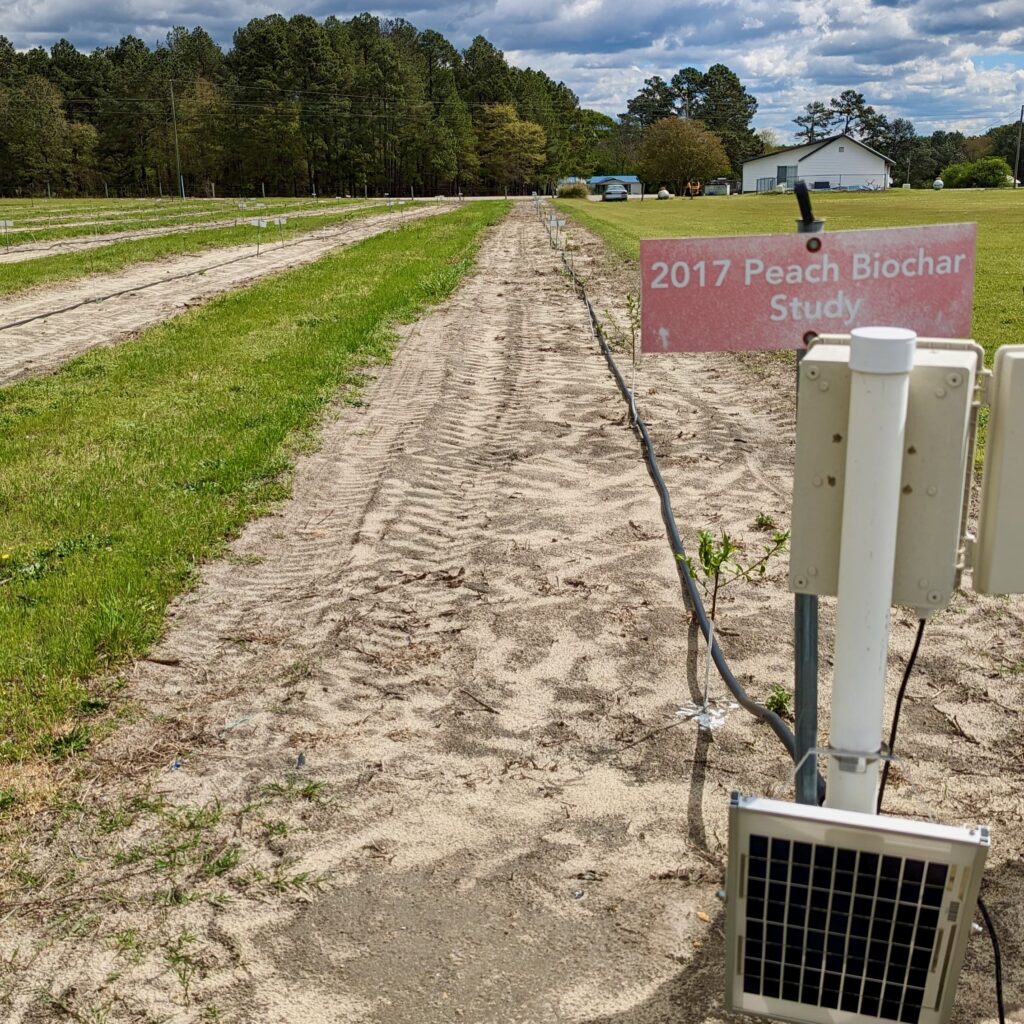
The bottoms of young peach tree stems (pictured here) are painted white to protect the young bark of the tree from herbicides when they spray for weed control, but it wears off over time.
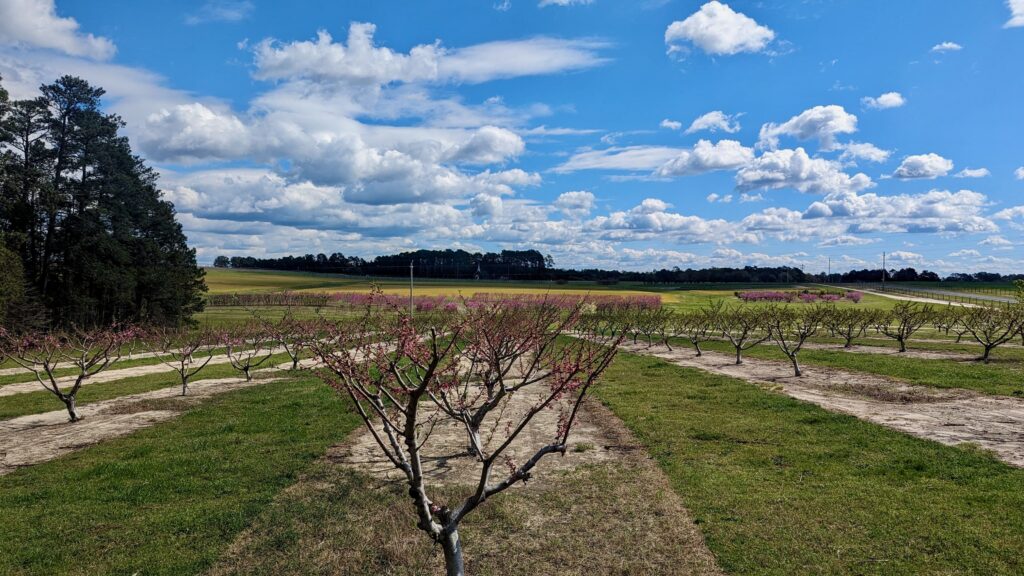
- Categories:


